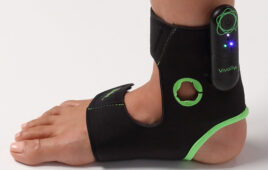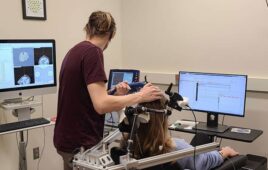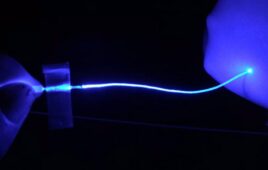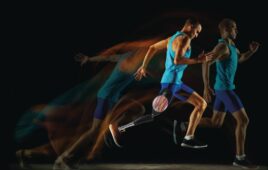
Amputee Dennis Aabo Sørensen, right, wearing sensory feedback enabled prosthesis in Rome. To feel what you touch – that’s the holy grail for artificial limbs. In a step toward that goal, European researchers created a robotic hand that let an amputee feel differences between a bottle, a baseball and a mandarin orange. (AP Photo/Patrizia Tocci, Science Translational Medicine)

Dennis Aabo Sørensen, of Aalborg, Denmark, who lost his left hand in a fireworks accident a decade ago, shows the sensory feedback enabled prosthesis he is testing in Rome. The patient only got to experiment with the bulky prototype for a week, and it’s far from the bionics of science fiction movies. But the research released Wednesday is part of a major effort to create more lifelike, and usable, prosthetics. This isn’t the first time scientists have tried to give some sense of touch to artificial hands; a few other pilot projects have been reported in the U.S. and Europe. But this newest experiment, published in the journal Science Translational Medicine, shows Sorensen not only could tell differences in the shape and hardness of objects, he also could quickly react and adjust his grasp. (AP Photo/Paolo Santalucia)

Neuroengineer Silvestro Micera, researcher at EPFL and Scuola Superiore Sant’Anna holding a bionic hand. (AP Photo/Hillary Sanctuary, EPFL, Science Translational Medicine)

Amputee Dennis Aabo Sørensen holding an orange while wearing sensory feedback enabled prosthesis in Rome. (AP Photo/Patrizia Tocci, Science Translational Medicine)




